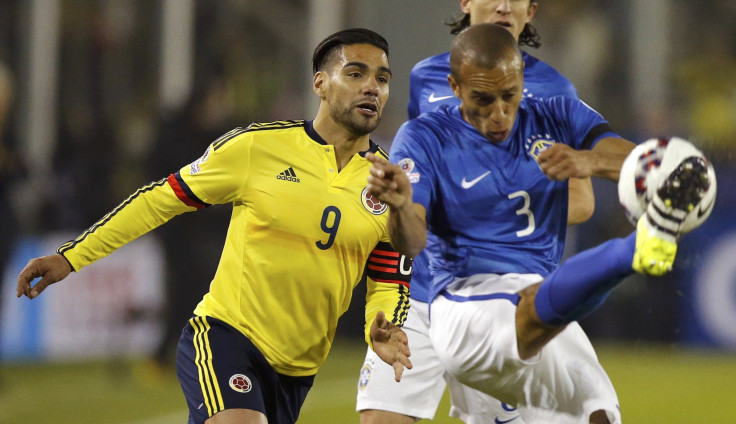Argentina vs. Colombia 2015: Prediction, Preview For Copa America Quarterfinal

Colombia were handed a reprieve to make it out of the group stage but now face the test of taking on pre-tournament favorites Argentina in the quarterfinals of the Copa America. A disappointing scoreless result with Peru on Sunday meant last year’s World Cup quarterfinalists were left relying on Brazil and Venezuela not to draw their contest later in the day. A narrow win for the Seleção kept Jose Pekerman’s men alive, but improvement will surely be necessary when going up against Group B winners Argentina in Viña del Mar.
For a squad featuring the attacking talents of James Rodríguez, Juan Cuadrado, Radamel Falcao, Carlos Bacca, Jackson Martínez and Teófilo Gutiérrez, it barely seems credible that Colombia produced just one goal in their three group games. But, in contrast, to their thrilling play that produced the country’s best ever World Cup performance in Brazil 12 months ago, Colombia have been anemic so far in Chile.
Much of the focus of their struggles has fallen on Falcao. Not so long ago the undoubted superstar of an exciting generation of talent, the striker’s struggles to recapture his devastating form since a serious knee injury 18 months ago have continued at South America’s quadrennial championship. The injury meant Falcao missed the World Cup, only for Colombia to thrive in his absence, playing one striker up front and giving Rodríguez the creative responsibility he would relish.
Since returning to fitness, Falcao has been handed the ultimate signal of faith by Perkerman by being made captain. Yet, while he scored against the likes of Bahrain and Kuwait in friendlies, the 29-year-old has failed to even look like hitting the net against higher-caliber opposition at the Copa America. More than just one player failing to perform, though, Falcao’s presence, and the fact it has been decided that he must be deployed alongside another striker, has disrupted the vitality that made Colombia such a threat. So far it has been a case of a team frustratingly failing to match the sum of its parts.
To a lesser degree, that criticism could also be leveled at their next opponents, however. While comfortable moving through to the last eight, Argentina have yet to fulfill their undoubted attacking potential. Perhaps no country in the world can match the forward talent of Lionel Messi, Sergio Agüero, Ángel di María, Javier Pastore, Gonzalo Higuaín and others, but that ability has only been seen in patches to this point.
Brilliant for the first half against Paraguay, Tata Martino’s team slumped to a 2-2 draw before edging past both Uruguay and Jamaica by the only goal. While the defense has been more resolute, the front of the team, as when reaching the World Cup final last year, is still to sparkle. It is something that Di Maria has put down more to the defensive tactics of their opponents.
“People and journalists, they talk a lot, but it is not easy to play against 10 opponents behind the ball,” he told Argentinean publication Olé.
With progress to the quarterfinals already secured, Argentina made two changes to their starting lineup against Jamaica, with Higuaín and Martin Demichelis coming into the side. Yet, despite the fact that Higuaín scored the only goal, Agüero, along with defender Nicolas Otamedi, is expected to return to the XI on Friday. Colombia will be forced to make at least two changes to their lineup, having lost Carlos Sánchez to suspension and fellow midfielder Edwin Valencia to a long-term knee injury.
Prediction: Colombia showed in beating Brazil that they may in some ways be more comfortable against a higher-caliber team like Argentina that will take the game to them. However, the loss of both Sánchez and Valencia is a huge blow. Sánchez, in particular, has been superb in sitting in front of the defense and shutting down opposition attacks. Without him, Argentina, even though they haven’t fully hit their stride yet, should be able to find enough openings to beat a Colombia team lacking its previous counter-attacking threat.
© Copyright IBTimes 2024. All rights reserved.





















